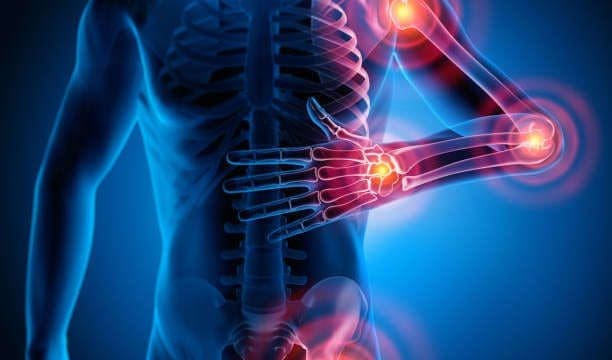
Innate and adaptive immunity responses often take the spotlight regarding the defense and protection against pathogens. Nevertheless, barrier tissues have proven to store inflammatory memory that allows them to protect us against pathogens. Indeed, this new insight of barrier memory provides a new perspective and positions our barrier tissues as a multifunctional structure balancing protection and metabolic function.
As a mammalian species, humans are a complex living entity that carries specialized immune cells and has a powerful physical barrier component to provide protection and defense. Indeed, epithelial barriers of the airways, skin, and intestine can modulate and respond to external and internal signals. Therefore, it has been proposed that barrier tissue can access and memorize information about previous pathogen encounters to provide a stronger and quicker response in future events.
Furthermore, immune memory information can be stored in locally accessible cell types that are residents and can maintain appropriate qualitative features. However, this storage mechanism can be compromised if these cells cannot store sufficient information or if there is excessive memory retrieval. Consequently, these two inappropriate memory settings will lead to increased infection or chronic inflammation, respectively.
This new barrier tissue memory term refers to a defined response to an initial trigger that is altering the environment and will persist until a secondary challenge.
Table of Contents
Components of inflammatory memory
There are five inflammatory memory components. Each one cooperates among them.
| Specificity: the recognition of an initiating stimulus defines it. It can range from a unique receptor-activated recognition to a more context-specific cue. |
| Quantity: this refers to the amount or frequency of the responding cells. |
| Quality: describes the polarization of responding cells. This polarization is the response to the presence of genes or the activity of their products. |
| Durability: this measures the response time depending on the quantity and quality of the responding cells. |
| Distribution: the distribution encompasses the cell lineages, types, and subsets that show intrinsic alterations of the four aforementioned components. |
Immunological memory
The recent findings on immunological memory can assure that it is a property found in all kingdoms of life. However, the information points towards the molecular and cellular mechanisms that can be classified as immunological memory. In fact, one of these mechanisms is the known reaction to a specific pathogen once there is a prior exposure.
Quantity and quality are the two main routes to memory storage by increasing the number of specific cells and altering these cells’ repose, respectively. Another component to consider is the durability and if this factor may be useful or detrimental for the immune response.
Besides, the quantitatively and qualitatively response can be found in multiple cell types. These cell types can be considered part of the innate immune response or the adaptative immune response. For example, lymphocytes can store memory of past immunological events and stay like “resident†tissue in a specific location for a long time.
Interestingly, macrophages can become “trained†too inflammatory responses. Another example is how other cells like endothelial cells and fibroblasts can change their structure and become primed as part of an inflammatory response. Besides, this can also be translated to the primming of microglia on the onset of neuroinflammation.
Immunological memory of epithelial cells
It is well-known that the skin, gut, and lungs’ epithelial barrier is the most important protective barrier we have. However, they are all specialized epithelial subsets with specific functions. High turnover epithelial cells are regulated at the level of multipotent epithelial progenitor and stem cells. Therefore, for these tissues to have their specific protective function, they need to “remember†immunological events. This particularity makes the progenitor compartment the best candidate for the memory storage unit.
This function is confirmed by multiple studies on the skin or gut epithelial surfaces. For instance, a study used a psoriasis-like inflammation on a particular site of a skin surface. Consequently, skin epithelial stem cells would accelerate the repair of the subsequent wound on that site.
Ketosis and the immune system:
It is clear that gut permeability and symbiosis with its microbiome its an important factor that contributes to the modulation of the immune response. The maintenance of ketosis is important for specific beneficial strains of bacteria, and now the measurement of ketone bodies can be easy with LEVL.
New findings on the relationship between inflammation and the immune response continue to rise. Nowadays, the permeability and damage of your epithelial barriers play a vital role in maintaining our health. Indeed, the participation of resident cells called to action by the innate immune response provides new insights towards different signals’ sensitization.
The immune response to pathogens has always been focused on immune cell activity. However, it is how these cells respond that provides a potent protective effect to our epithelial barriers. Nowadays, this new theory can join the term gut permeability while being supported by evidence-based studies that reaffirm the clear interaction between inflammation and immunity. – Ana Paola RodrÃguez Arciniega, MS.
References:
Ordovas-Montanes, Jose et al. “Distribution and storage of inflammatory memory in barrier tissues.â€Â Nature reviews. Immunology vol. 20,5 (2020): 308-320. doi:10.1038/s41577-019-0263-z
Additional Online Links & Resources (Available 24/7)


Online Appointments or Consultations:Â bit.ly/Book-Online-Appointment
Online Physical Injury / Accident Intake Form: bit.ly/Fill-Out-Your-Online-History
Online Functional Medicine Assessment: bit.ly/functionmed
Disclaimer
The information herein is not intended to replace a one-on-one relationship with a qualified healthcare professional, licensed physician, and not medical advice. We encourage you to make your own health care decisions based on your research and partnership with a qualified health care professional. Our information scope is limited to chiropractic, musculoskeletal, physical medicines, wellness, sensitive health issues, functional medicine articles, topics, and discussions. We provide and present clinical collaboration with specialists from a wide array of disciplines. Each specialist is governed by their professional scope of practice and their jurisdiction of licensure. We use functional health & wellness protocols to treat and support care for the musculoskeletal system’s injuries or disorders. Our videos, posts, topics, subjects, and insights cover clinical matters, issues, and topics that relate to and support, directly or indirectly, our clinical scope of practice.* Our office has made a reasonable attempt to provide supportive citations and has identified the relevant research study or studies supporting our posts. We provide copies of supporting research studies available to regulatory boards and the public upon request. We understand that we cover matters that require an additional explanation of how it may assist in a particular care plan or treatment protocol; therefore, to further discuss the subject matter above, please feel free to ask Dr. Alex Jimenez or contact us 915-850-0900.  Read More…
Dr. Alex Jimenez DC, MSACP, CCST, IFMCP*, CIFM*, CTG*
email:Â coach@elpasofunctionalmedicine.com
phone: 915-850-0900
Licensed in Texas & New Mexico
Disclaimers
Professional Scope of Practice *
The information herein on "How Barrier Tissues Protect Us Against Pathogens" is not intended to replace a one-on-one relationship with a qualified health care professional or licensed physician and is not medical advice. We encourage you to make healthcare decisions based on your research and partnership with a qualified healthcare professional.
Blog Information & Scope Discussions
Welcome to El Paso's wellness blog, where Dr. Alex Jimenez, DC, FNP-C, a board-certified Family Practice Nurse Practitioner (FNP-C) and Chiropractor (DC), presents insights on how our team is dedicated to holistic healing and personalized care. Our practice aligns with evidence-based treatment protocols inspired by integrative medicine principles, similar to those found on dralexjimenez.com, focusing on restoring health naturally for patients of all ages.
Our areas of chiropractic practice include Wellness & Nutrition, Chronic Pain, Personal Injury, Auto Accident Care, Work Injuries, Back Injury, Low Back Pain, Neck Pain, Migraine Headaches, Sports Injuries, Severe Sciatica, Scoliosis, Complex Herniated Discs, Fibromyalgia, Chronic Pain, Complex Injuries, Stress Management, Functional Medicine Treatments, and in-scope care protocols.
Our information scope is limited to chiropractic, musculoskeletal, physical medicine, wellness, contributing etiological viscerosomatic disturbances within clinical presentations, associated somato-visceral reflex clinical dynamics, subluxation complexes, sensitive health issues, and functional medicine articles, topics, and discussions.
We provide and present clinical collaboration with specialists from various disciplines. Each specialist is governed by their professional scope of practice and their jurisdiction of licensure. We use functional health & wellness protocols to treat and support care for the injuries or disorders of the musculoskeletal system.
Our videos, posts, topics, subjects, and insights cover clinical matters, issues, and topics that relate to and directly or indirectly support our clinical scope of practice.*
Our office has reasonably attempted to provide supportive citations and has identified the relevant research studies or studies supporting our posts. We provide copies of supporting research studies available to regulatory boards and the public upon request.
We understand that we cover matters that require an additional explanation of how they may assist in a particular care plan or treatment protocol; therefore, to discuss the subject matter above further, please feel free to ask Dr. Alex Jimenez, DC, APRN, FNP-BC, or contact us at 915-850-0900.
We are here to help you and your family.
Blessings
Dr. Alex Jimenez DC, MSACP, APRN, FNP-BC*, CCST, IFMCP, CFMP, ATN
email: coach@elpasofunctionalmedicine.com
Licensed as a Doctor of Chiropractic (DC) in Texas & New Mexico*
Texas DC License # TX5807
New Mexico DC License # NM-DC2182
Licensed as a Registered Nurse (RN*) in Texas & Multistate
Texas RN License # 1191402
ANCC FNP-BC: Board Certified Nurse Practitioner*
Compact Status: Multi-State License: Authorized to Practice in 40 States*
Graduate with Honors: ICHS: MSN-FNP (Family Nurse Practitioner Program)
Degree Granted. Master's in Family Practice MSN Diploma (Cum Laude)
Dr. Alex Jimenez, DC, APRN, FNP-BC*, CFMP, IFMCP, ATN, CCST
My Digital Business Card






